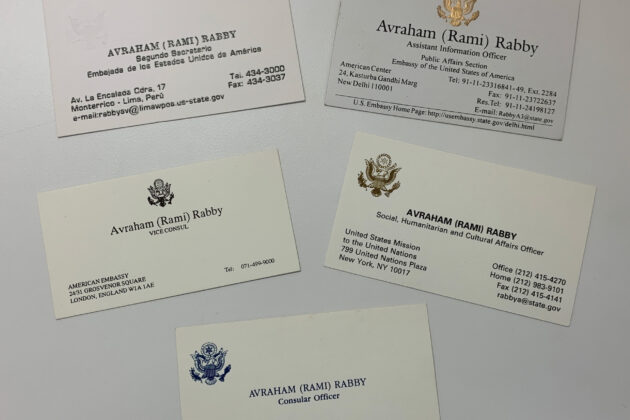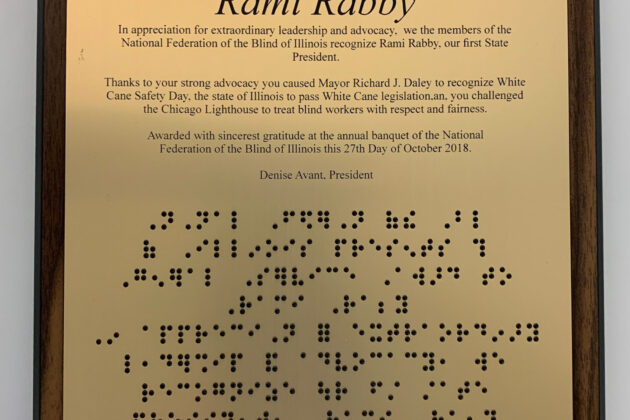Avraham Rabby’s White Cane
United States late 20th century
This foldable white cane belonged to Avraham (Rami) Rabby, who was a lifelong advocate for the rights of those with disabilities, particularly vision loss. Canes like this one are commonly used by people with low or no vision to identify themselves and to help safely navigate on foot. Rabby was completely blind, having lost his sight as a child due to detached retinas. He also served as a diplomat in the U.S. Foreign Service for 17 years, a job he had to fight for. He used his skills as an advocate to persuasively argue that he – and other blind people – could serve effectively as diplomats. After several years, Rami and others finally succeeded in forcing change.
This image is in the public domain and no permission is required to use it. Please credit the National Museum of American Diplomacy as the original source, and provide a link back to the item page where possible.
Most of our items are donations, and we cannot always confirm the copyright or trademark status of photographs, prints, drawings, and other artistic works that may be depicted in these images.
Please contact us at NMAD@state.gov for any permissions or usage questions.
MLA Format
Avraham Rabby's White Cane. late 20th century. National Museum of American Diplomacy, https://diplomacy.state.gov/items/
Chicago Format
Avraham Rabby's White Cane, late 20th century, National Museum of American Diplomacy, Washington, DC, https://diplomacy.state.gov/items/
APA Format
(late 20th century). Avraham Rabby's White Cane [Object]. National Museum of American Diplomacy, Washington, D.C., United States. https://diplomacy.state.gov/items/
LESSON PLAN
Seeing the World Differently
This lesson plan explores Avraham Rabby’s advocacy for blind U.S. Foreign Service Officers, highlighting his efforts in promoting equal access for all, regardless of their disability.



